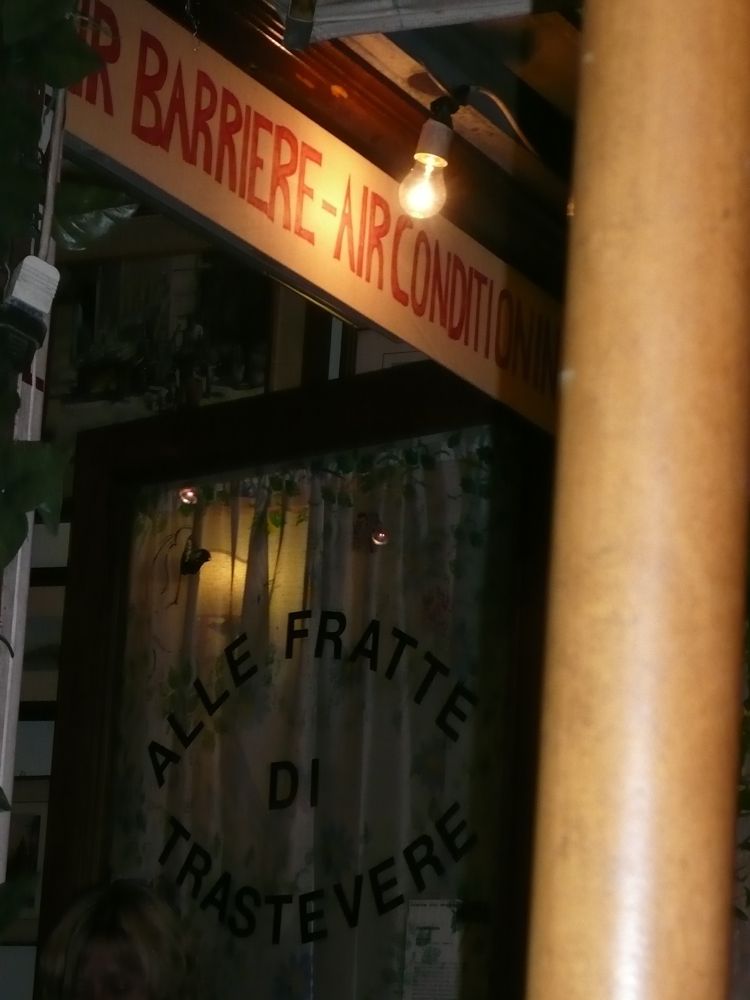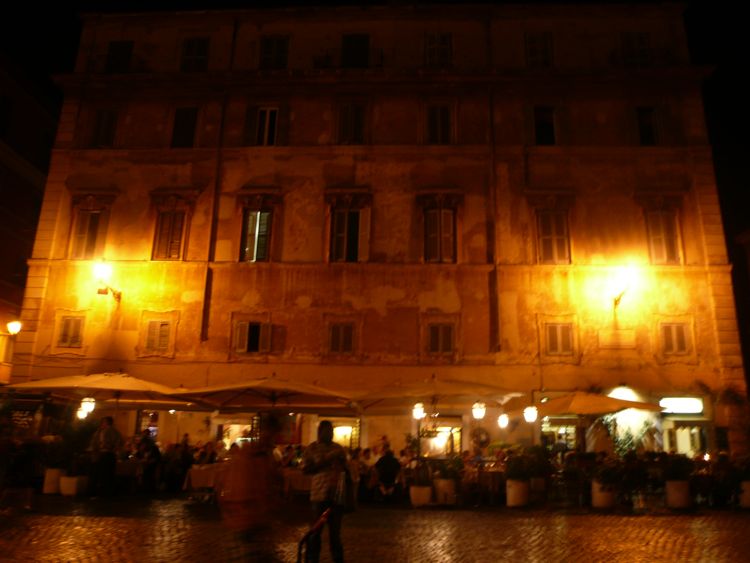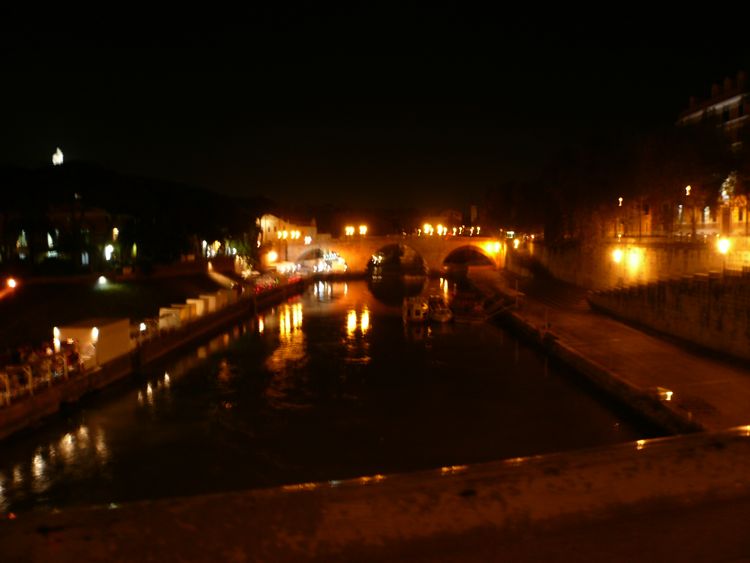Rome Part Three (Page Fourteen)
The Pantheon

Did you know? - The Pantheon is a building in Rome, commissioned by Marcus Agrippa as a temple to all the gods of Ancient Rome, and rebuilt by Emperor Hadrian in about 126 AD. The nearly-contemporary writer (2nd-3rd c. CE), Cassius Dio, speculated that the name comes either from the statues of so many gods placed around this building, or else from the resemblance of the dome to the heavens.[3] Since the French Revolution, when the church of Sainte-Geneviève, Paris, was deconsecrated and turned into a secular monument, the Panthéon of Paris, the generic term pantheon has been sparsely applied to any building in which the illustrious dead are honored or buried.
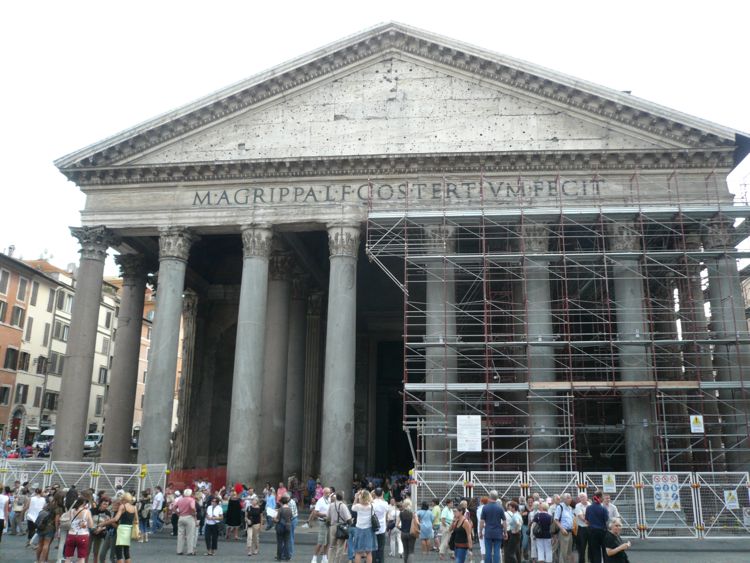

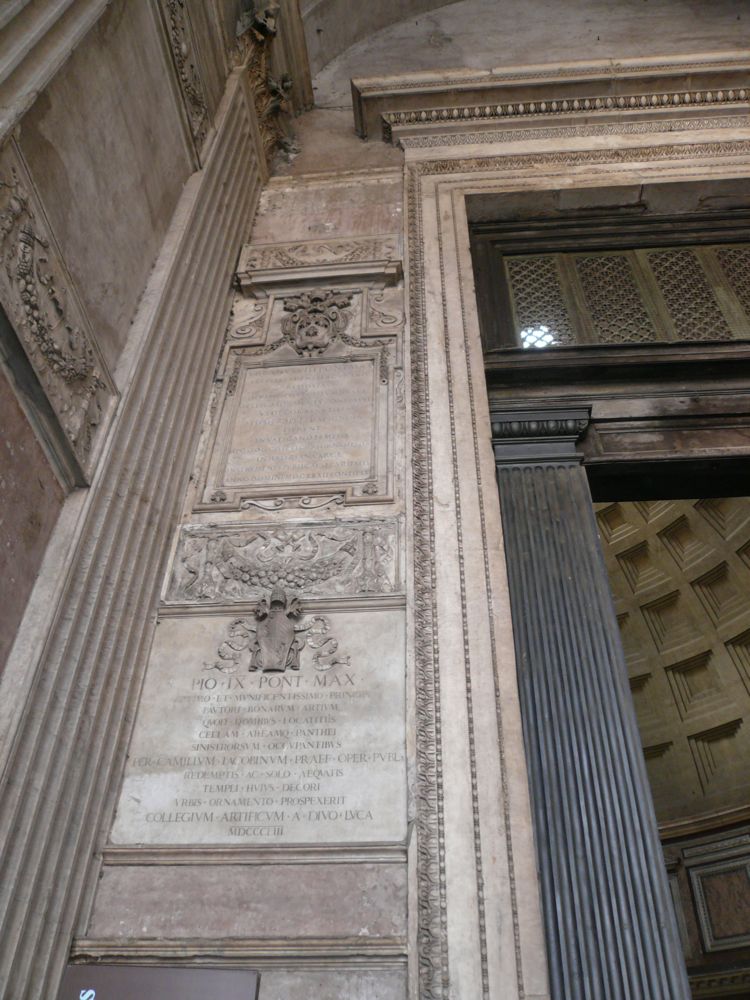
Did you know? - The building is circular with a portico of three ranks of huge granite Corinthian columns (eight in the first rank and two groups of four behind) under a pediment opening into the rotunda, under a coffered, concrete dome, with a central opening (oculus) to the sky. Almost two thousand years after it was built, the Pantheon's dome is still the world's largest unreinforced concrete dome.
The height to the oculus and the diameter of the interior circle are the same, 43.3 metres (142 ft). A rectangular structure links the portico with the rotunda. It is one of the best preserved of all Roman buildings. It has been in continuous use throughout its history, and since the 7th century, the Pantheon has been used as a Roman Catholic church dedicated to "St. Mary and the Martyrs" but informally known as "Santa Maria Rotonda."
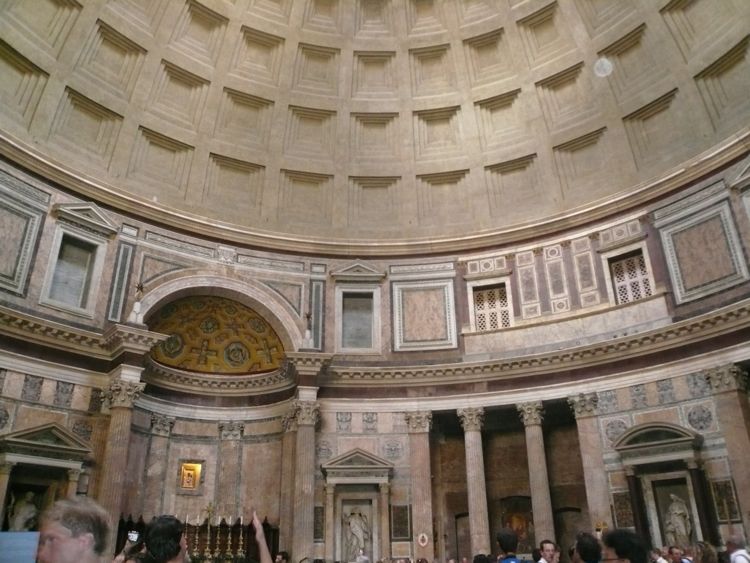
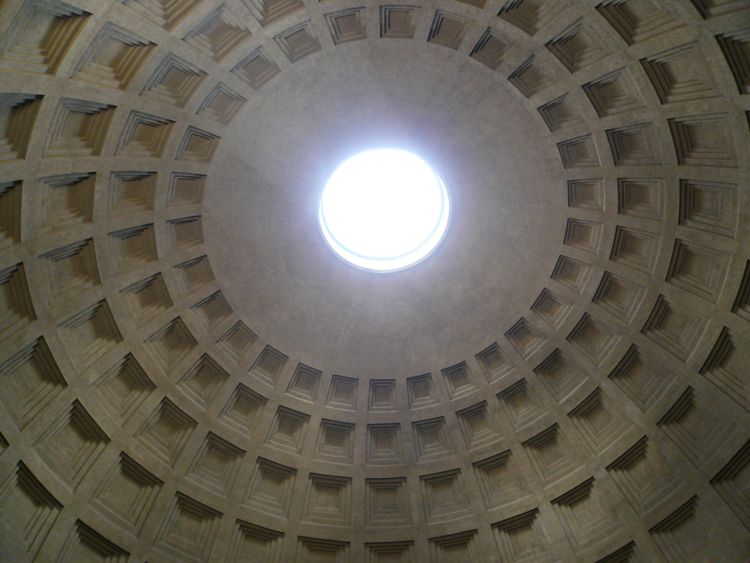
The Pantheon dome. The coffers for the concrete dome
were poured in molds, probably on the temporary
Did you know? - The 4,535 metric tons (4,999 short tons) weight of the Roman concrete dome is concentrated on a ring of voussoirs 9.1 metres (30 ft) in diameter that form the oculus, while the downward thrust of the dome is carried by eight barrel vaults in the 6.4 metres (21 ft) thick drum wall into eight piers. The thickness of the dome varies from 6.4 metres (21 ft) at the base of the dome to 1.2 metres (3.9 ft) around the oculus.
No tensile test results are available on the concrete used in the Pantheon; however, Cowan discussed tests on ancient concrete from Roman ruins in Libya, which gave a compressive strength of 2.8 ksi (20 MPa). An empirical relationship gives a tensile strength of 213 psi (1.47 MPa) for this specimen.
Finite element analysis of the structure by Mark and Hutchison[28] found a maximum tensile stress of only 18.5 psi (0.128 MPa) at the point where the dome joins the raised outer wall.[29] The stresses in the dome were found to be substantially reduced by the use of successively less dense aggregate stones in higher layers of the dome. Mark and Hutchison estimated that, if normal weight concrete had been used throughout, the stresses in the arch would have been some 80% higher. The interior coffering not only was decorative but also reduced the weight of the roof, as did the elimination of the apex by means of the oculus.
The top of the rotunda wall features a series of brick relieving arches, visible on the outside and built into the mass of the brickwork. The Pantheon is full of such devices — for example, there are relieving arches over the recesses inside — but all these arches were hidden by marble facing on the interior and possibly by stone revetment or stucco on the exterior.
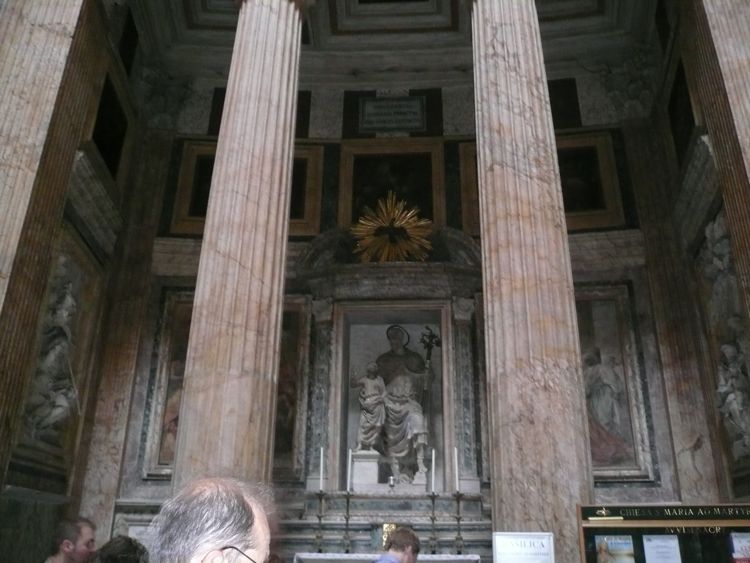
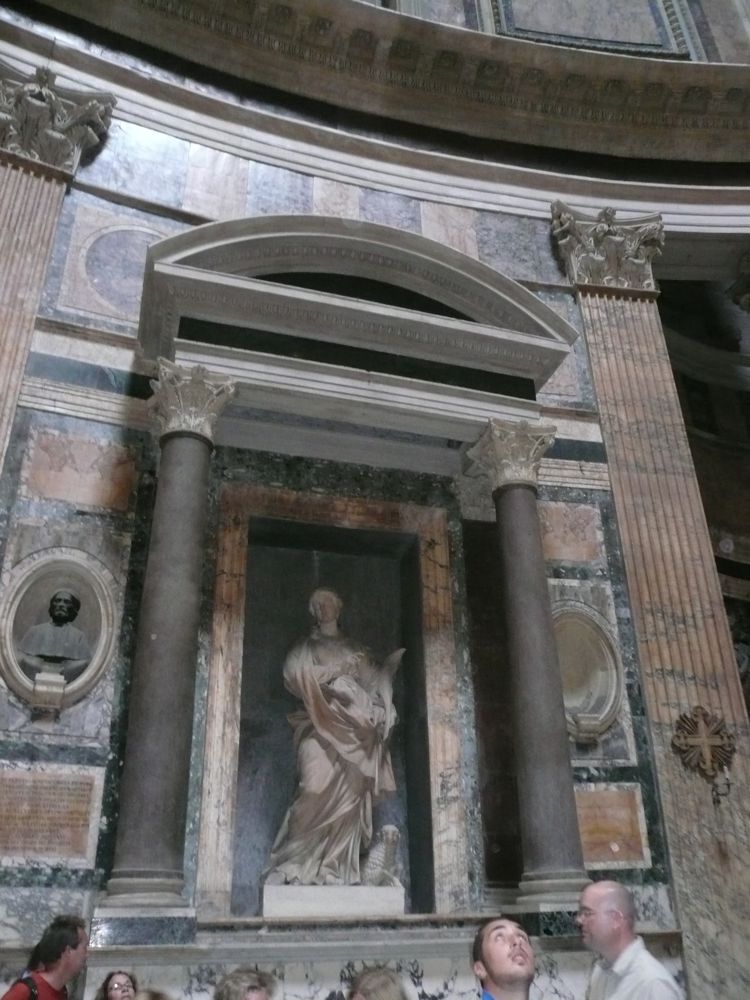
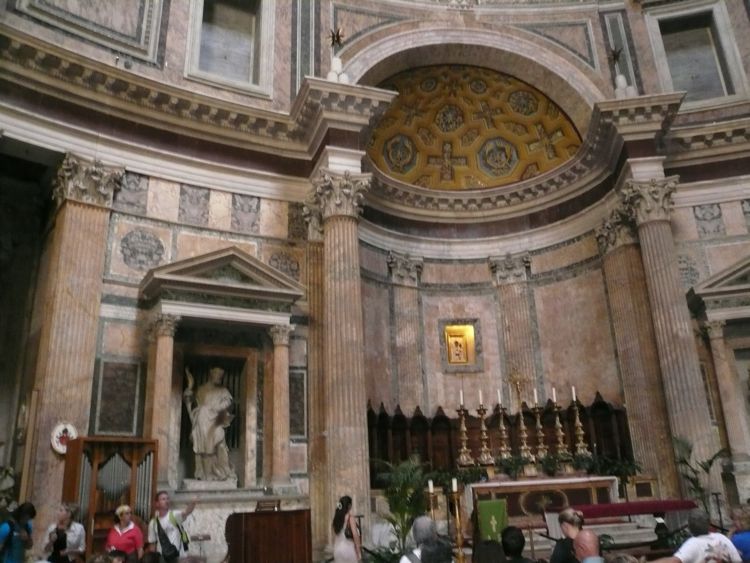
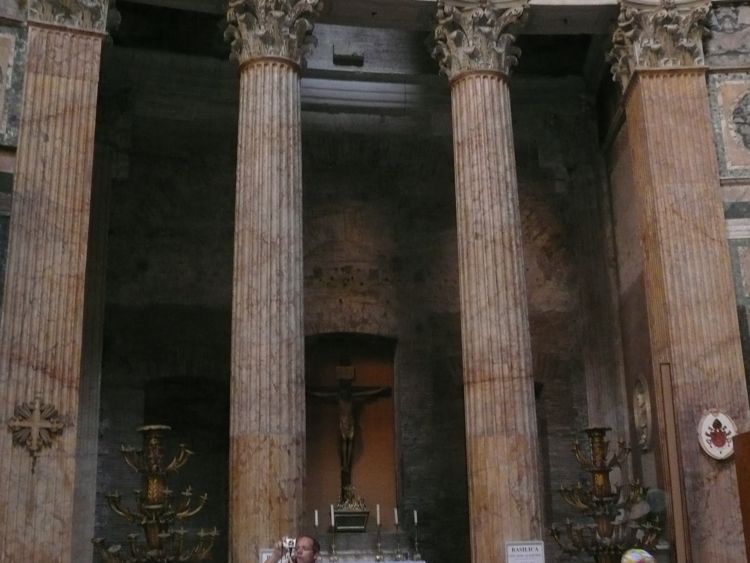
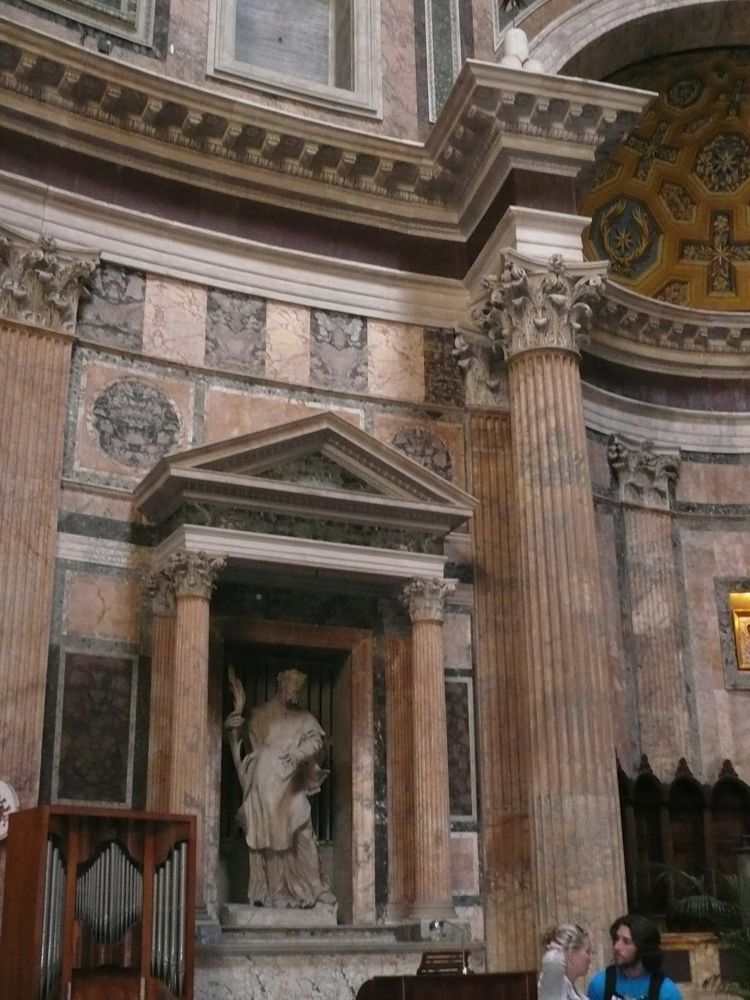
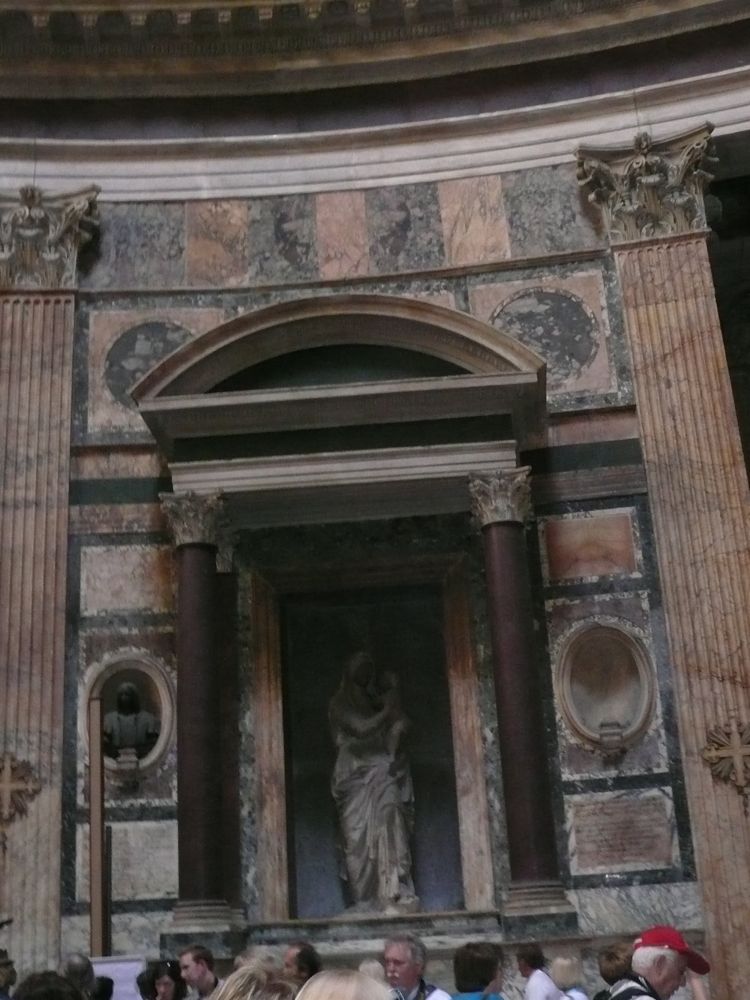


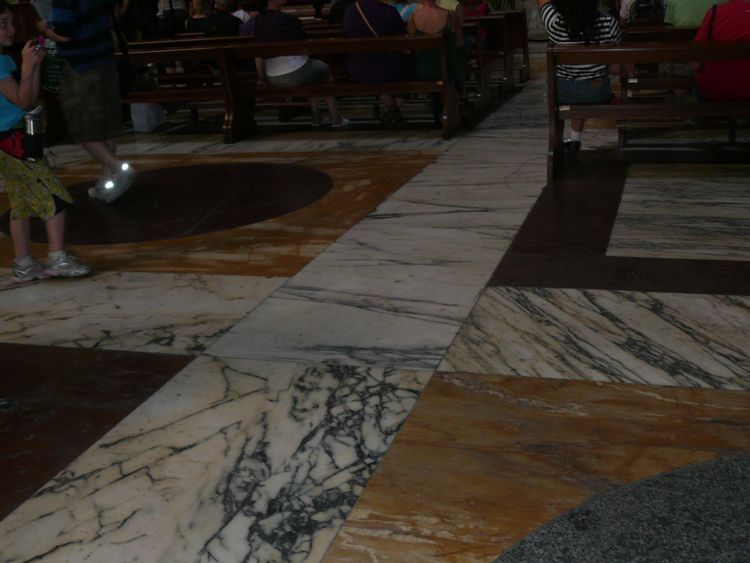
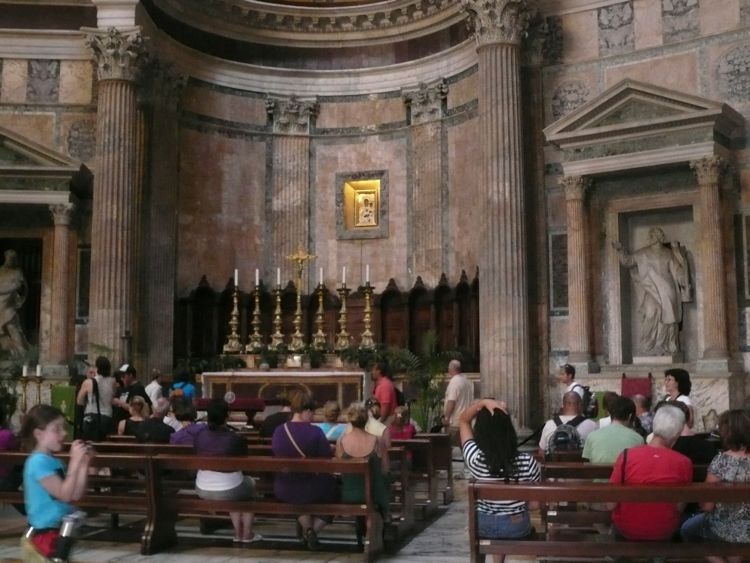



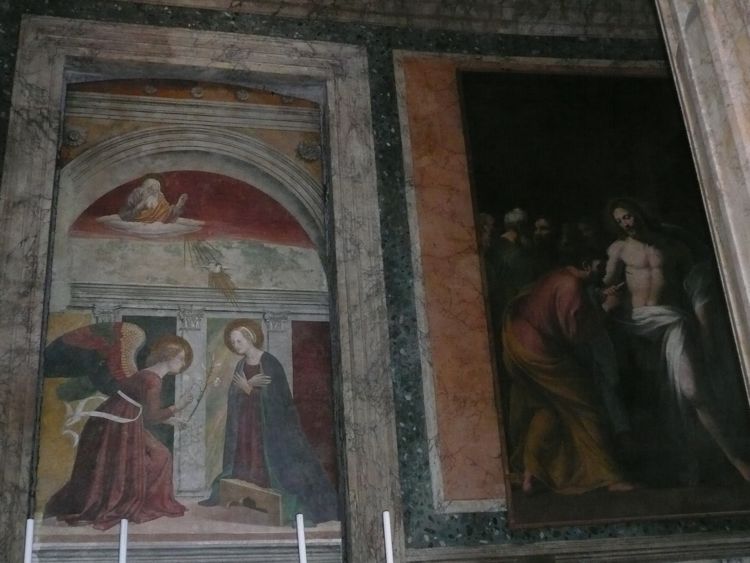
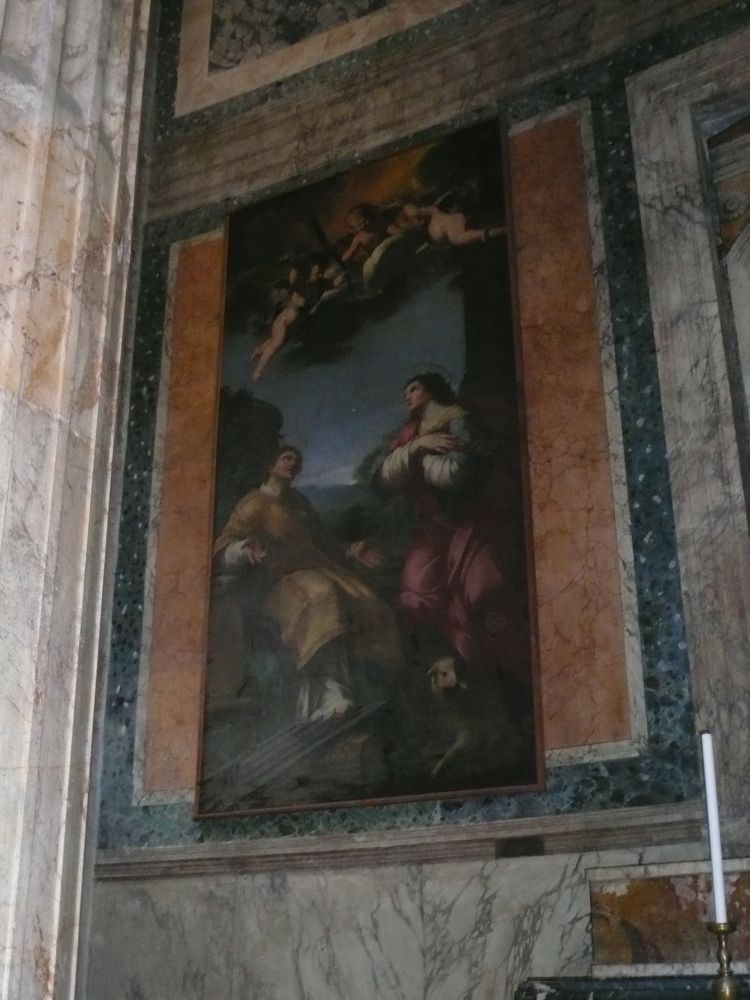


Winding Our Way o The Piazza Navona

Nice legs

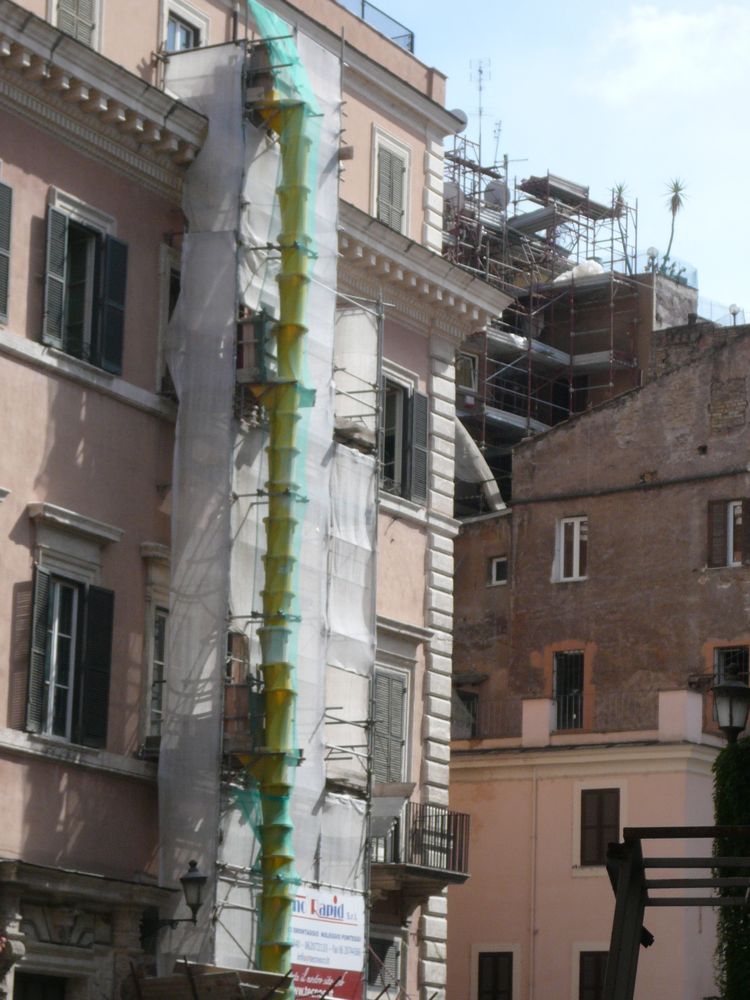
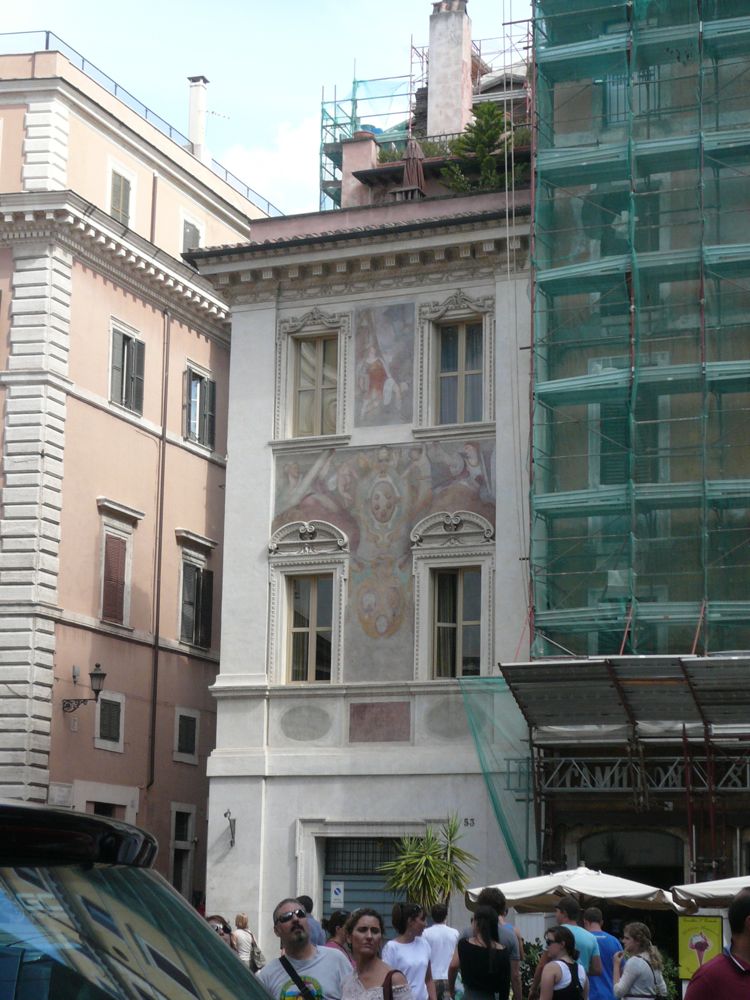
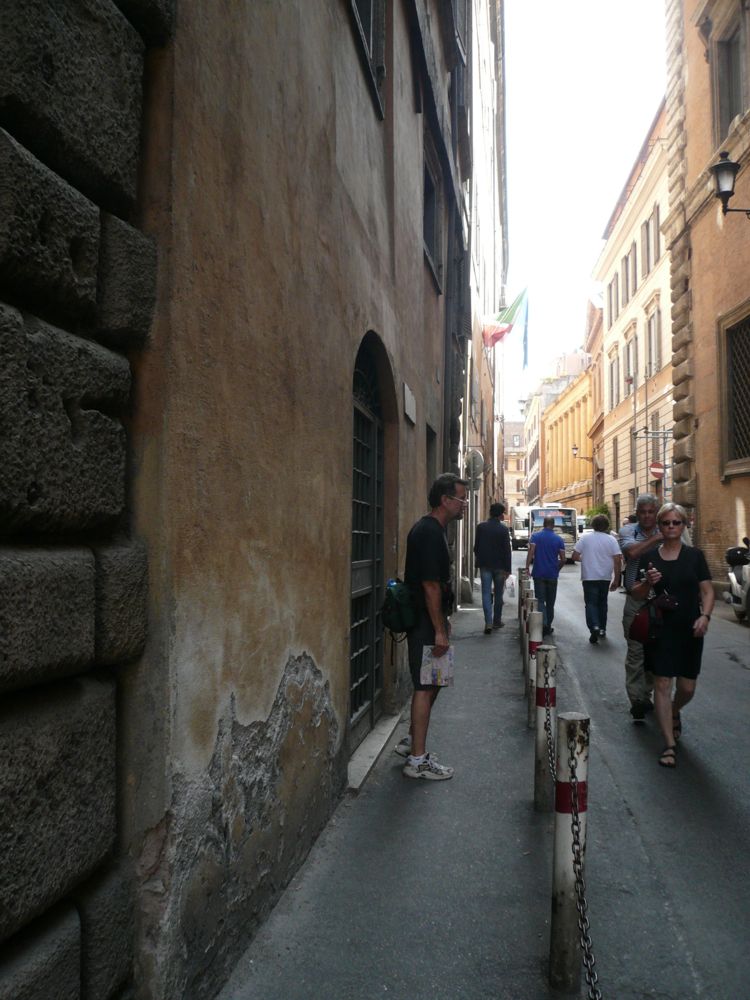
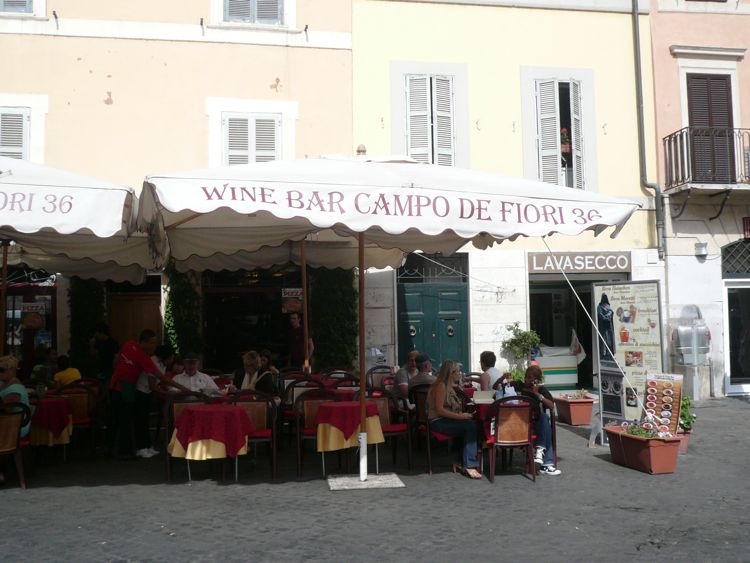
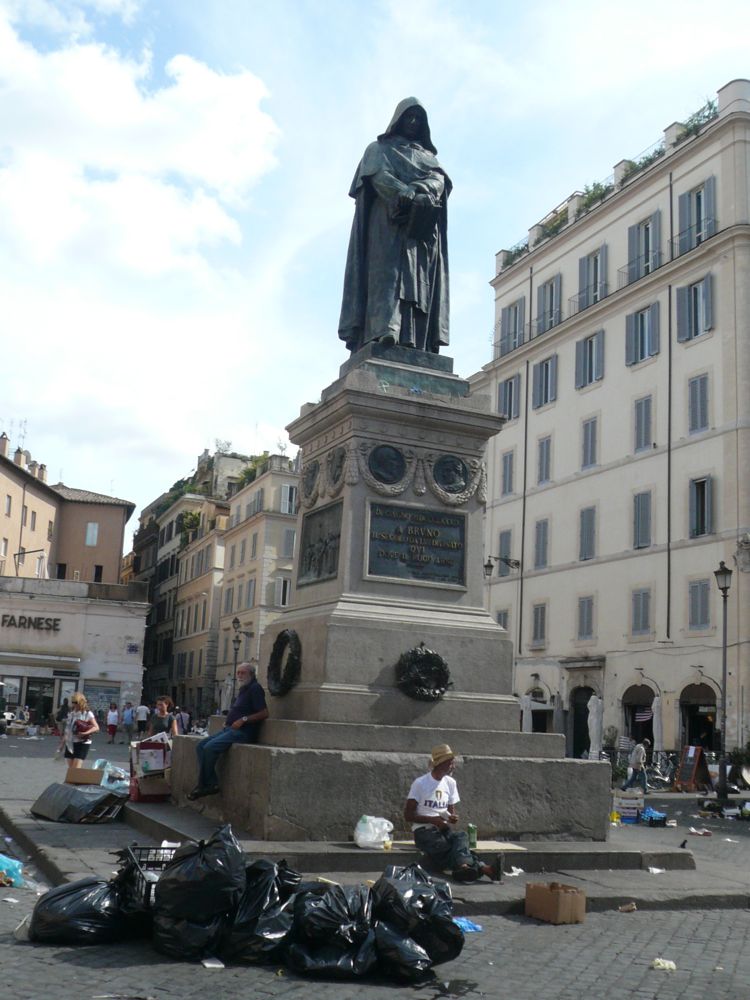
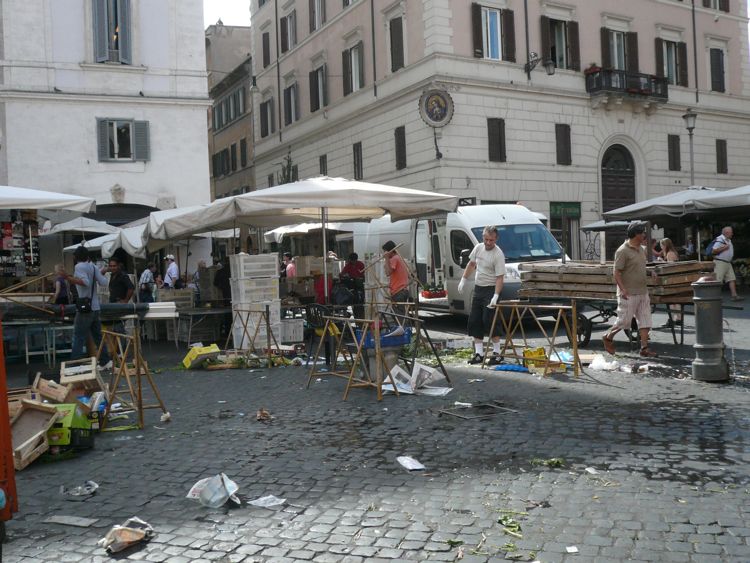


Finally At The Piazza Navona
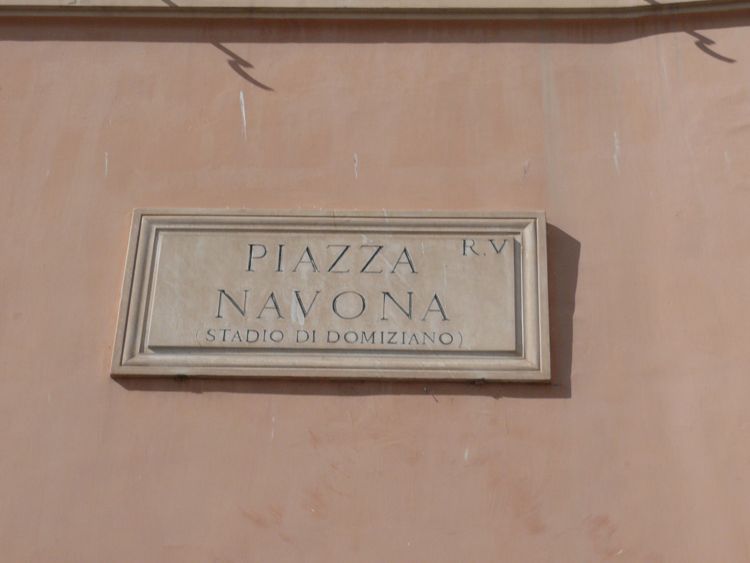
Did you know? - Piazza Navona is a city square in Rome, Italy. It is built on the site of the Stadium of Domitian, built in first century AD, and follows the form of the open space of the stadium. The ancient Romans came there to watch the agones ("games"), and hence it was known as 'Circus Agonalis' (competition arena). It is believed that over time the name changed to 'in agone' to 'navone' and eventually to 'navona'.
Defined as a public space in the last years of 15th century, when the city market was transferred to it from the Campidoglio, the Piazza Navona is a significant example of Baroque Roman architecture and art. It features sculptural and architectural creations: in the center stands the famous Fontana dei Quattro Fiumi or Fountain of the Four Rivers (1651) by Gian Lorenzo Bernini; the church of Sant'Agnese in Agone by Francesco Borromini and Girolamo Rainaldi; and the Pamphilj palace also by Rainaldi and which features the gallery frescoed by Pietro da Cortona.
The Piazza Navona has two additional fountains: at the southern end is the Fontana del Moro with a basin and four Tritons sculpted by Giacomo della Porta (1575) to which, in 1673, Bernini added a statue of a Moor, or African, by Bernini, wrestling with a dolphin, at the northern is the Fountain of Neptune (1574) created by Giacomo della Porta. The statue of Neptune in the northern fountain, the work of Antonio Della Bitta, was added in 1878 to make that fountain more symmetrical with La Fontana del Moro in the south.
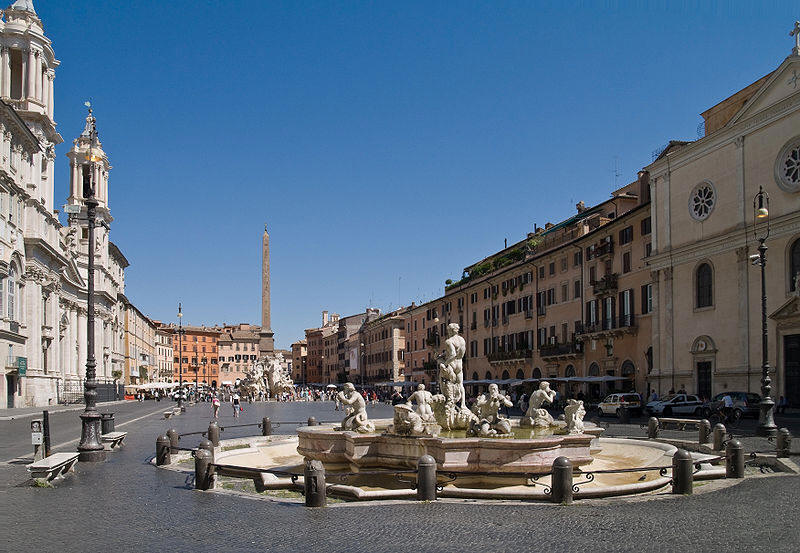
Piazza Navona looking northwards

the Fontana del Moro with a basin and four Tritons sculpted by Giacomo della Porta (1575) to which, in 1673, Bernini added a statue of a Moor, or African, by Bernini, wrestling with a dolphin, at the northern is the Fountain of Neptune (1574) created by Giacomo della Porta.

The Piazza looking south


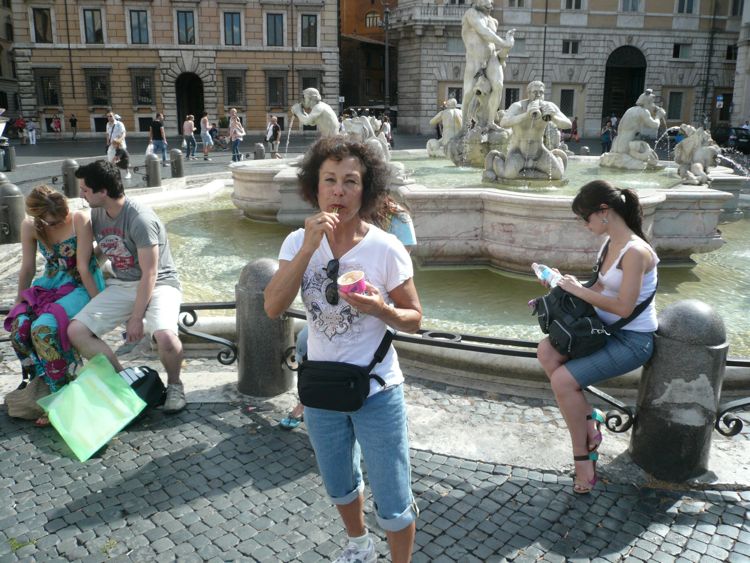
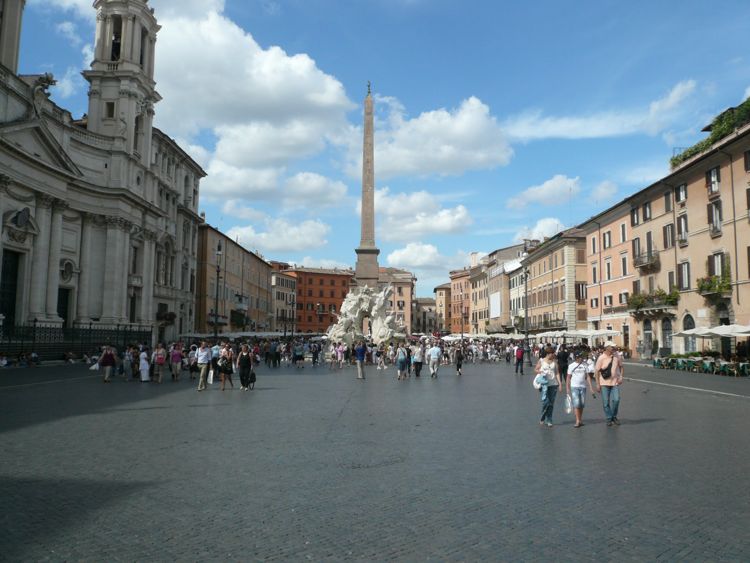
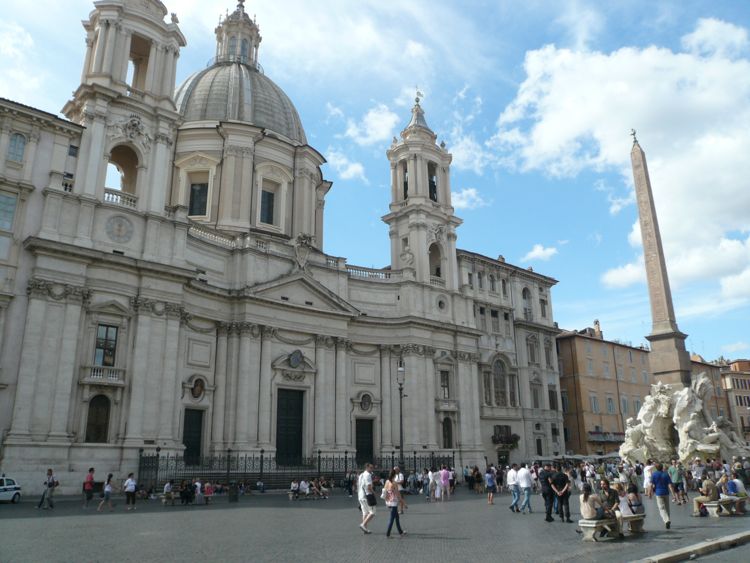

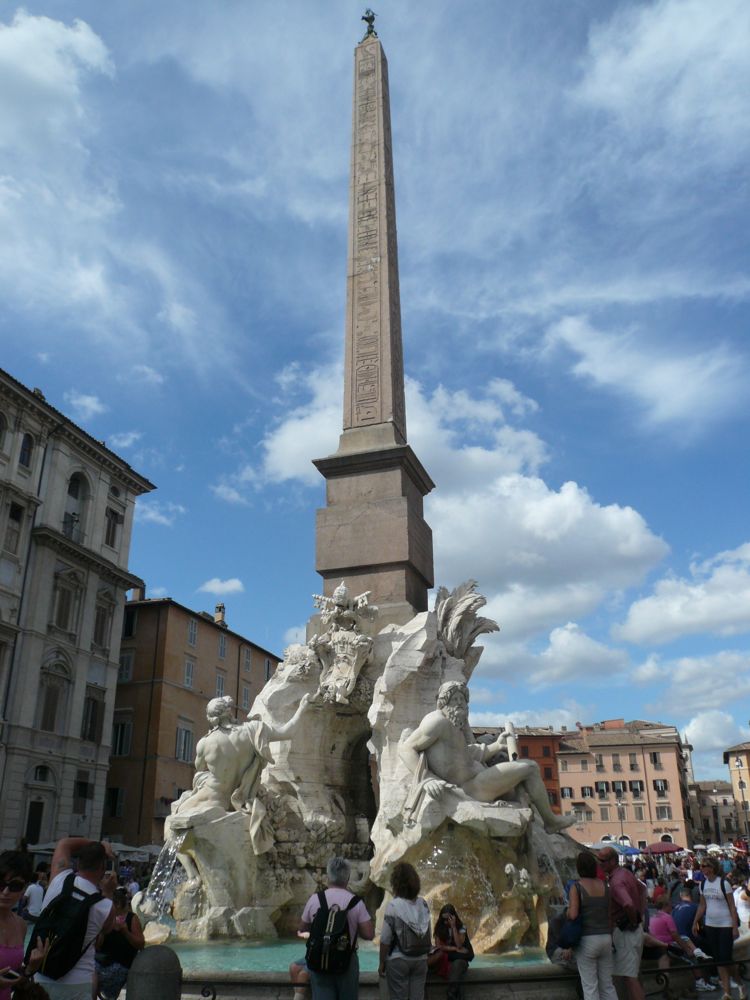
Fountain of the four Rivers with Egyptian obelisk, in the middle of Piazza Navona
Did you know? - The Fontana dei Quattro Fiumi or "Fountain of the Four Rivers" is a fountain in Rome, Italy, located in the Piazza Navona. Designed by Gianlorenzo Bernini, it is emblematic of the dynamic and dramatic effects sought by High Baroque artists. It was erected in 1651 in front of the church of Sant'Agnese in Agone, and yards from the Pamphilj Palace belonging to this fountain's patron, Innocent X (1644-1655).
The four gods on the corners of the fountain represent the four major rivers of the world known at the time: the Nile, Danube, Ganges, and Plate. The design of each god figure has symbolic importance.
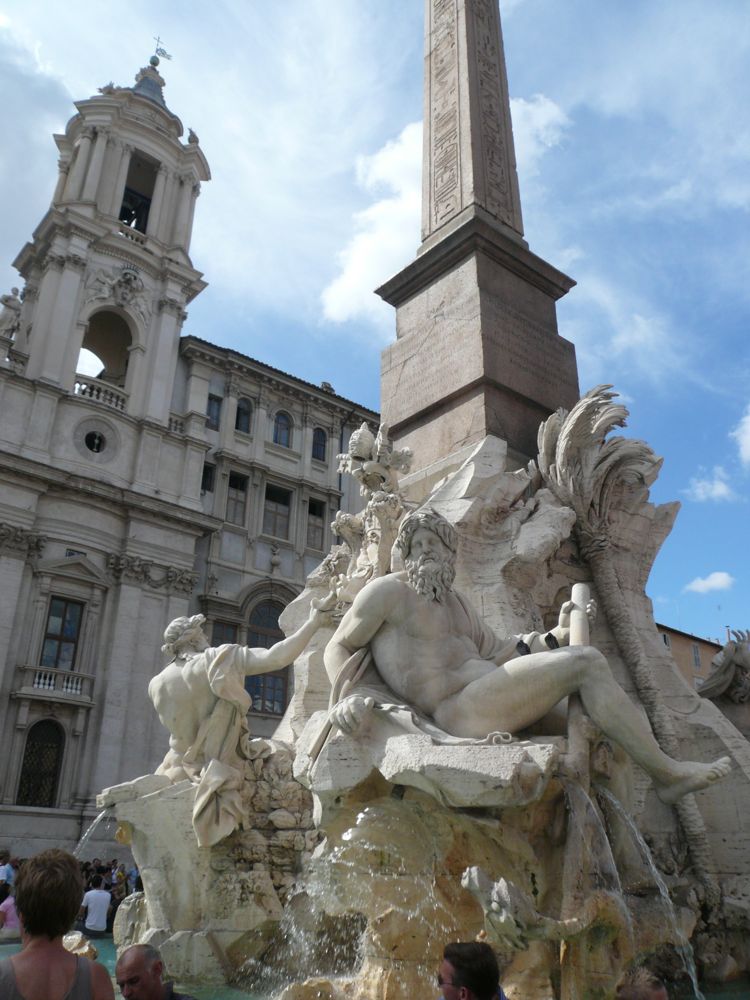

Fountain of the Four Rivers, showing the river-god Ganges.
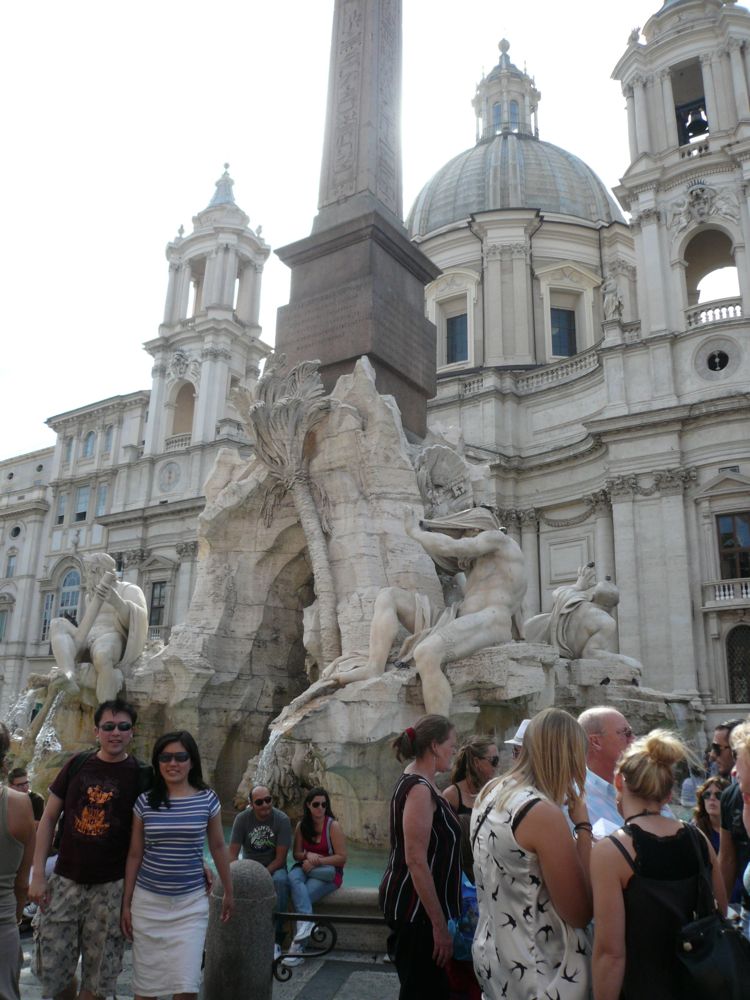
Tourist Bob



La Fontana del Moro (the Moor Fountain)
Did you know? - La Fontana del Moro (the Moor Fountain) is a fountain located at the southern end of the Piazza Navona in Rome, Italy. It represents a Moor, or African (perhaps originally meant to be Neptune), standing in a conch shell, wrestling with a dolphin, surrounded by four Tritons. It is placed in a basin of rose-colored marble. The fountain was originally designed by Giacomo della Porta in 1575 with the dolphin and four Tritons. In 1653, the statue of the Moor, by Gian Lorenzo Bernini, was added. In 1874, during a restoration of the fountain, the original statues were moved to the Villa Borghese and replaced with copies.
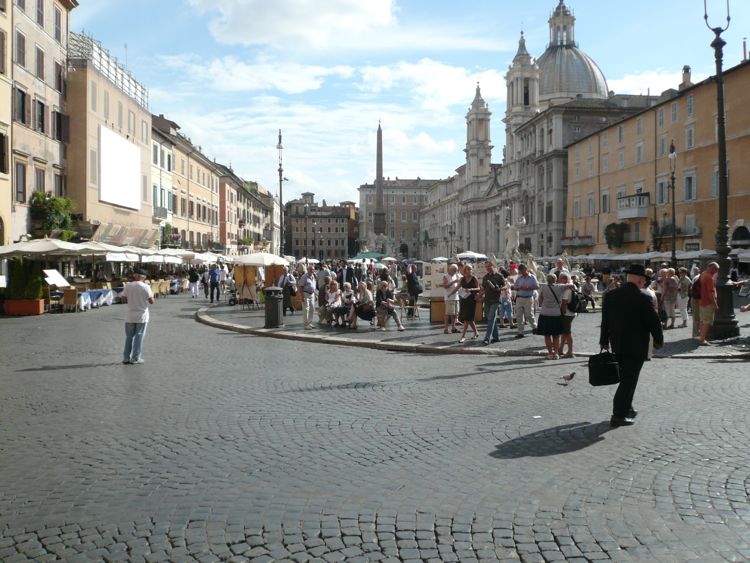


Decisions decisions

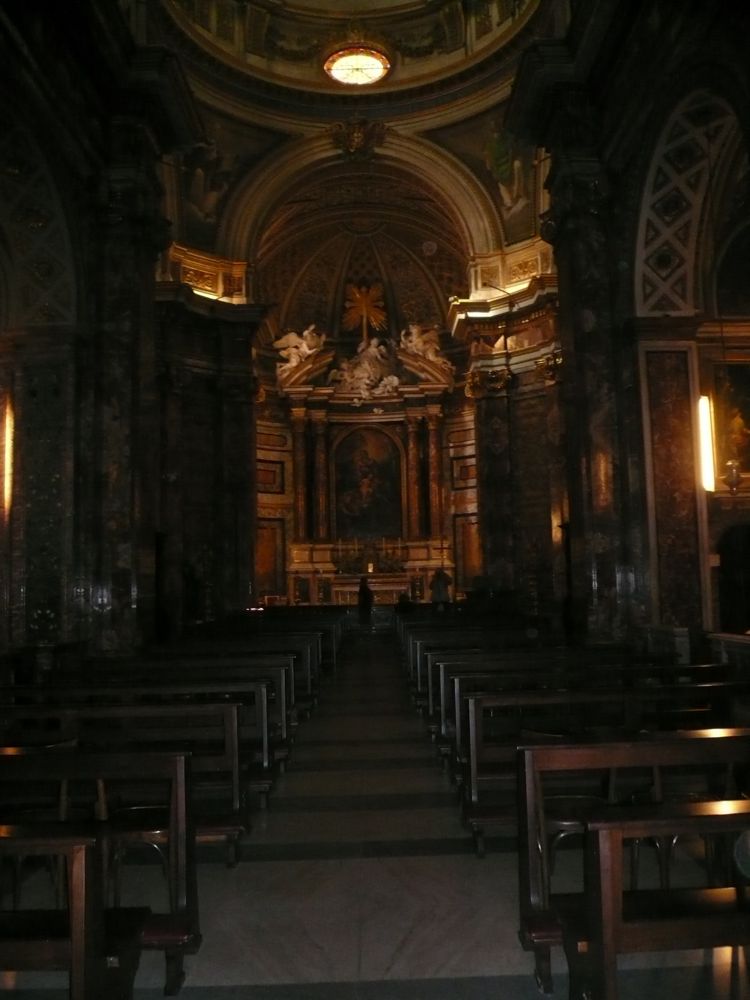

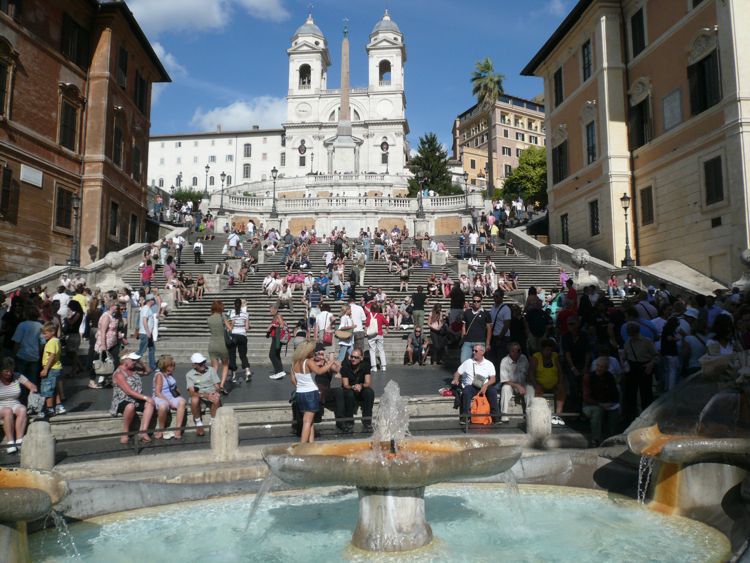




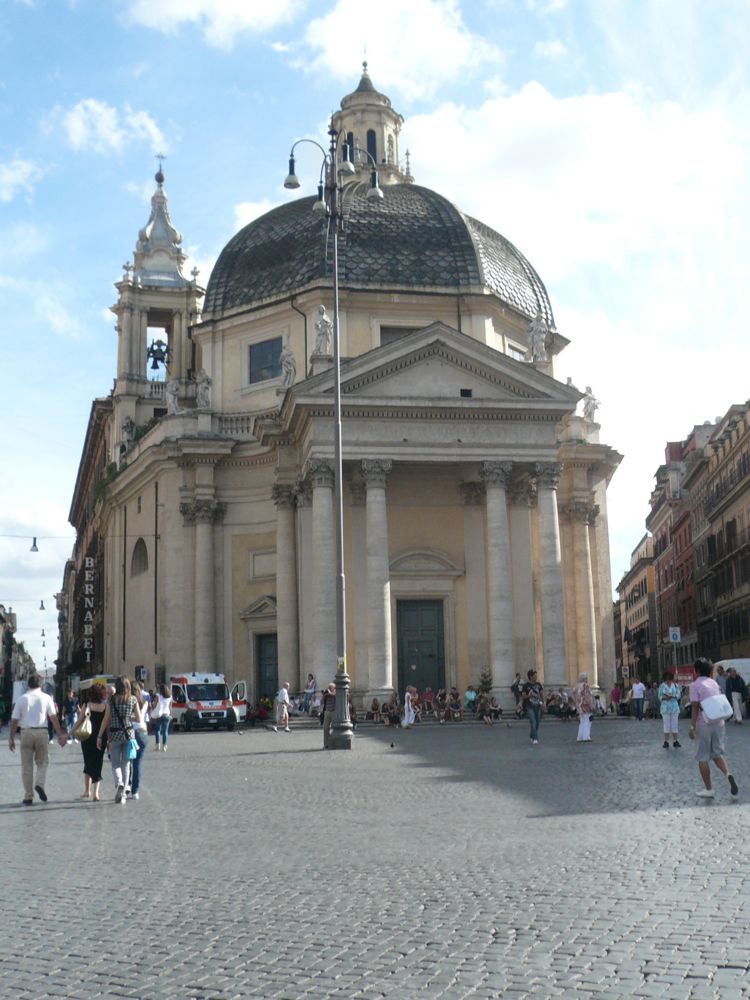
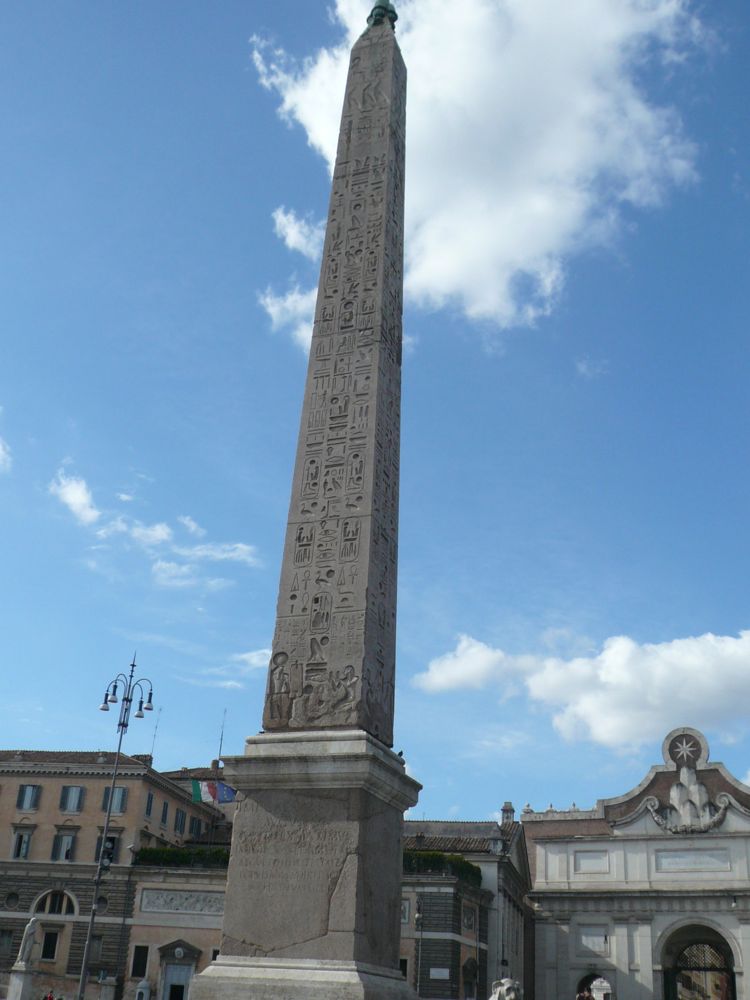
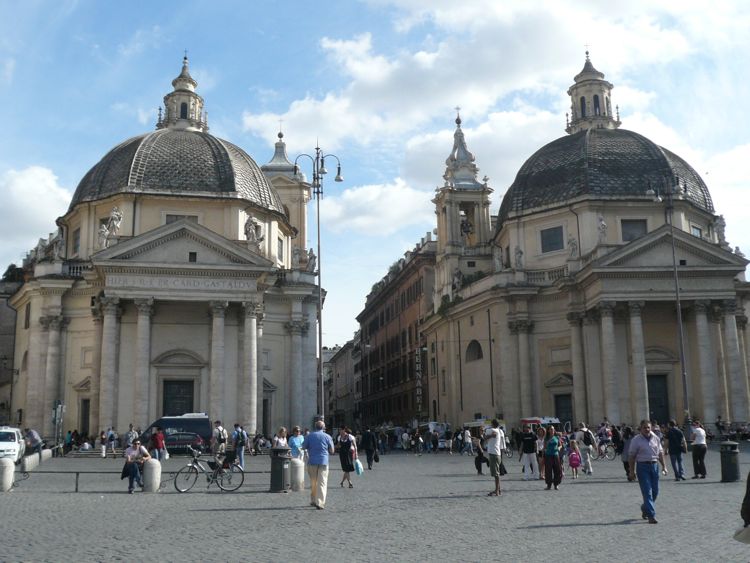
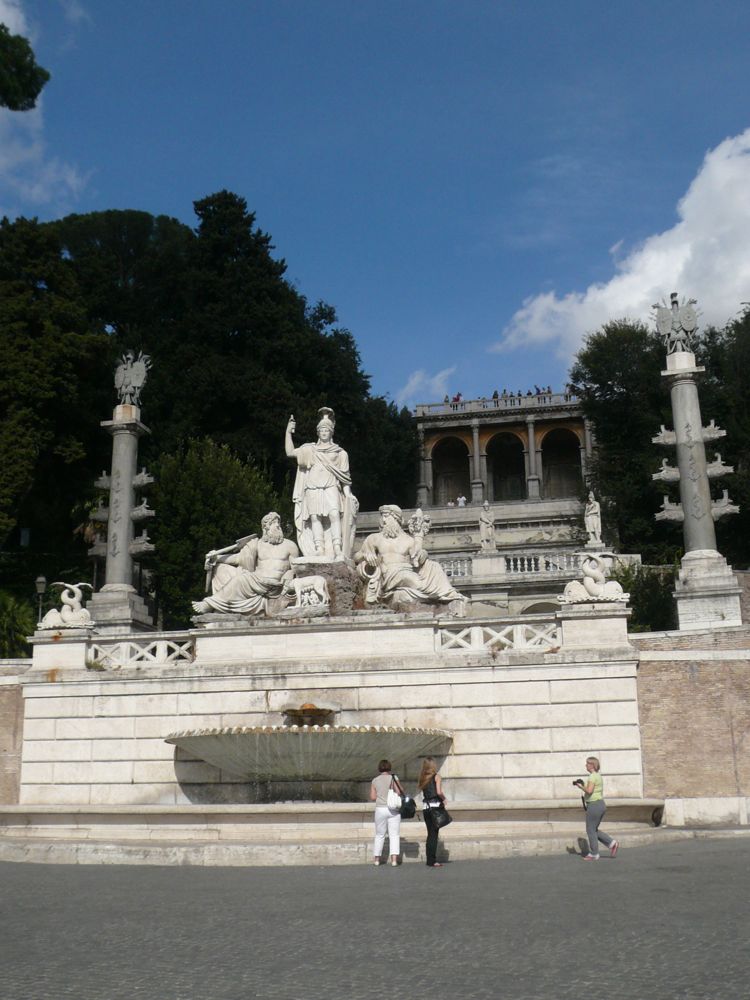

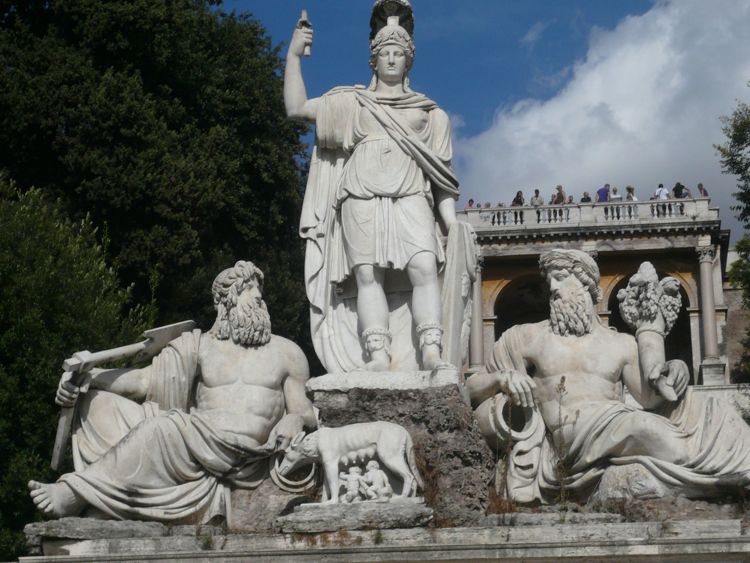
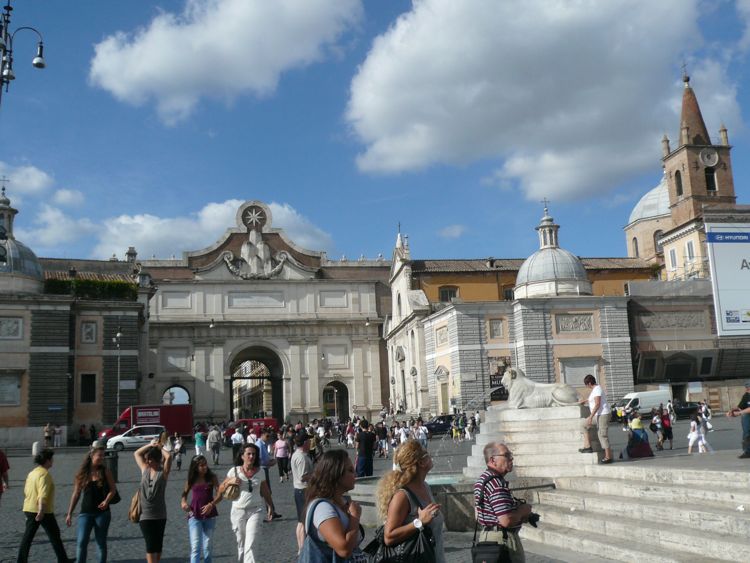

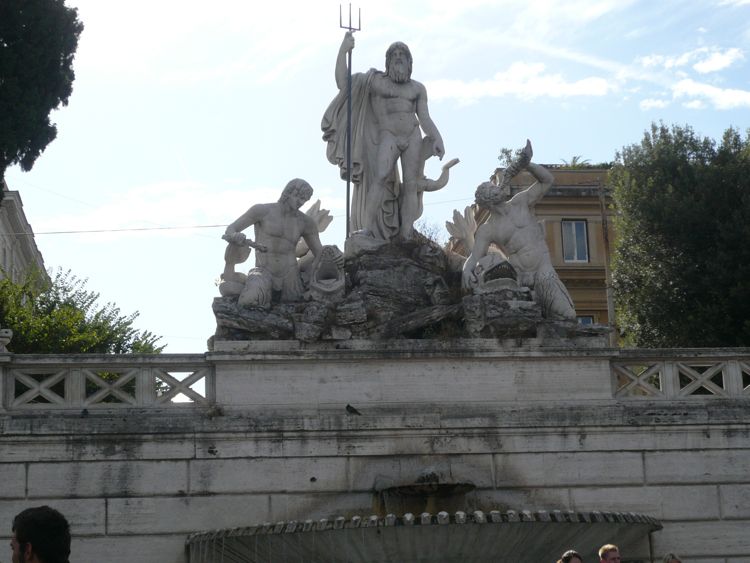
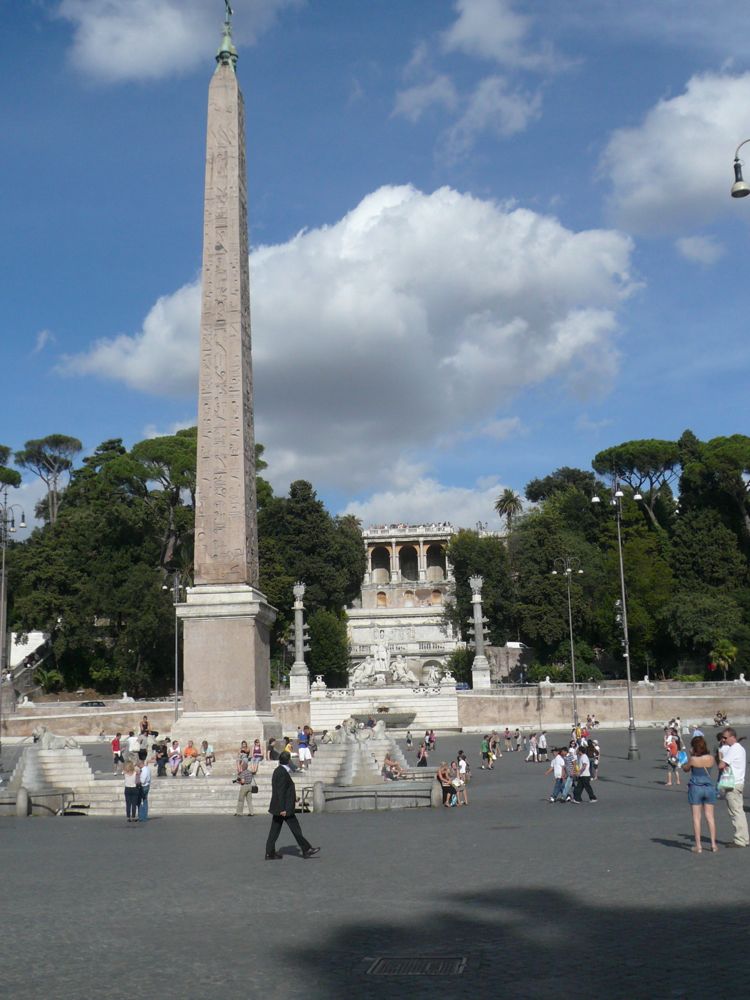
Time To Dine
